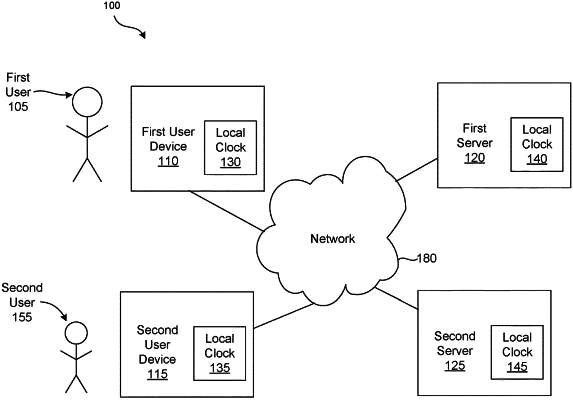| CPC H04L 69/28 (2013.01) [G06F 1/14 (2013.01); G06F 11/0721 (2013.01); G06F 11/0772 (2013.01); G06Q 10/00 (2013.01); G06Q 50/26 (2013.01); H04L 67/10 (2013.01)] | 20 Claims |

|
1. A method for providing global clock consistency across a distributed computing system, the method comprising:
receiving, by a user device, a request whose outcome depends on an order of a first and second event, wherein the first event was processed at a first server of the distributed computing system and the second event was processed at a second server of the distributed computing system;
in response to requesting information regarding the first event, receiving, by the user device from the first server, a hybrid timestamp of the first event, the hybrid timestamp comprising a first physical component and a first logical component, wherein the first physical component represents a physical time at which the first event occurred as observed by a physical clock, and wherein the first logical component represents a logical sequence number indicative of an ordering of the first event;
in response to requesting information regarding the second event, receiving, by the user device from the second server, a timestamp value for the second event that is determined by the second server based on the second server also receiving the hybrid timestamp of the first event;
determining, by the user device, an order of the first and second event based on the hybrid timestamp and the timestamp value; and
processing, by the user device, the request based on the determined order of the first and second event.
|